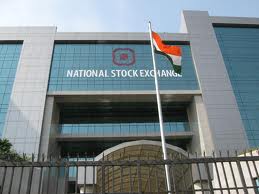Capital Market
A capital market is a market for securities which can be either debt or equity, where business enterprises which  includes companies and governments can raise long-term funds. In other words it is defined as a market in which money is provided for a period of more than a year.
includes companies and governments can raise long-term funds. In other words it is defined as a market in which money is provided for a period of more than a year.
The capital market includes the stock market where the equity securities are traded and the bond market where the debt securities are traded. Financial regulators, such as the India’s Securities and Exchange Board of India (SEBI) or the U.S. Securities and Exchange Commission (SEC), oversee the capital markets in their designated jurisdictions to ensure that investors are protected against fraud, among other duties. Certain rules and regulations are formulated by them which must be adhered to so as to safeguard the interest of the investors.
Classification of Capital Market
Based on the type of securities traded capital market is divided into two parts: stock market and bond market.
- Stock Market – A stock market or equity market is a public entity for the trading of company stock i.e., shares and derivatives at an agreed price. For Example: Bombay Stock Exchange or BSE is one of the oldest stock exchanges and also enjoys its stature of being the fourth largest stock exchange in Asia, deals with the trading of securities where about 5,085 Indian companies are listed.
Read On GWI How to invest in the India Stock Market where Management Quality is a choice between Bad and Ugly.
- Bond Market – The bond market which is also known as the credit, or fixed income market is that part of capital market market where participants buy and sell debt securities which are usually in the form of bonds. The Securities Industry and Financial Markets Association, SIFMAclassifies the bond market into five different specific segments:
- Corporate
- Government & agency
- Municipal
- Mortgage backed, asset backed, and collateralized debt obligation
- Funding
Also the Capital markets may be classified as primary markets and secondary markets based on the nature of trading facilitated by it.
- Primary Market – It is that part of capital market in which new stock or bond issues are sold to investors via a mechanism which is known as underwriting.
- Secondary Market – It is that part of capital market where the existing securities are traded among investors or traders usually on a securities exchange, over-the-counter, or elsewhere,
Challenges of the Indian Capital Market
Indian Economy is the tenth largest economy in the world by nominal GDP and the fourth largest by purchasing  power parity (PPP). Following a strong economic reform post-independence socialist economy, the country’s economic growth progressed at a rapid pace, as the LPG policy was implemented in 1991 for international competition and foreign investment. Despite fast economic growth, India still faces massive income inequalities, high unemployment and malnutrition.
power parity (PPP). Following a strong economic reform post-independence socialist economy, the country’s economic growth progressed at a rapid pace, as the LPG policy was implemented in 1991 for international competition and foreign investment. Despite fast economic growth, India still faces massive income inequalities, high unemployment and malnutrition.
Following are the main challenges which act as a hurdle in the growth of capital market:
1) Inflation – Inflation is the rate at which the prices for goods and services are rising and subsequently, purchasing power is falling. The inflation situation in the economy continues to be a cause of concern. Despite tightening of the monetary policy by the apex of India, RBI and other steps taken by the government, inflation continues to remain close to the double digit mark. High international oil prices, high global food prices are some of the causes of high inflation.
2) GDP – The growth figures for Indian economy are highly disappointing and highlight an unmistakable downward trend. GDP is expected to grow by ~5-6% 2012-13. Sectors like manufacturing and mining have seen a considerable erosion of growth momentum.
3) Index of Industrial Production – Weakness in industrial production trend continues to be a point of concern for the economy. The recent IIP numbers was registered below expectation. Weakness was seen with growth in the capital goods segment, intermediate goods segment and consumer goods segment which slowed down drastically during these months.
4) Population – The current population of India is over 1.23 billion, making it the second most populous country in the world after China, with over 1.35 billion people. India represents almost 17.31% of the world’s population which is a serious concern. If the trend of growth continues, the crown of the world’s most populous country will move on India from China by 2030. The population growth rate is at 1.58% with which it is predicted India would reach 1.5 billion mark by 2030.
| India’s Population in 2012 | 1.23 billion |
| Population of India in 1947 | 350 million |
5) Non uniform Tax reforms – With the non uniformity in the tax system across the states it is a difficult task to carry out the businesses which resulted in undergrowth of the same. The different tax rates implemented in some states across pan India is a major challenge to carry out the business smoothly and also it accounts for a reason of increasing prices of goods and services.
6) Foreign Policy – Foreign investment flows into India saw a dip of about 17% in the year 2010-11 over the previous year. This dip is largely on account of a slowdown seen in case of FDI. In 2009-10, FDI inflows totaled US$ 37.7 billion which was reduced to US$ 27 billion in 2010-11. Of the top 25 sectors, 15 sectors have seen a dip in FDI flows during April – Feb 2010-11, compared to the same period in 2009-10. These sectors involve services, construction, housing and real estate, telecommunication and agricultural services, where investment flows have slowed down considerably.
7) Education and Unemployment – 9.4 % of the population is unemployed which is yet another alarming issue for the growing nation. The literacy rate in India is 74.04% as of April 2011 which constitutes of 65.46% females and 82.14% males. The literacy rate is increasing but the rate of increment is low, which again is a matter of concern.
8) Poverty – About 37 % of Indian population lies below poverty line which is a very alarming situation for a growing economy like India. The main reason for such diversity is the uneven distribution of wealth in the economy where a handful of people are the owner of maximum revenue and the majority of the population is too poor to even arrange for their daily bread. The distribution of wealth in India resembles the pyramid model. The pyramid states that the base of the pyramid is the poor people which is maximum in number, while the high net worth people is very few in numbers which resembles to the top of pyramid. As the wealth increases the number of people in the category decreases.
Conclusion
Though it is very difficult to conclude about the capital market in short but still to maintain the legacy it should go on like:
Indian market is a booming market; it has scope of development in sectors like Pharmaceuticals, Retail industry, Automobiles, Education, etc. FDI should be allowed in sectors to attract the foreign investors though keeping our own economy stable of its own and not mostly dependent on global market. Inter and Intra terrestrial issues should be dealt with proper policy making and divestment of PSU’s and inviting private players in sectors like Railways, Infrastructure should be done so as to boost the overall growth of the economy and thus the market as it is the market which drives the economy and vice-versa.
“Market and Economy are the two sides of the same coin and cannot be separated”
Google+

